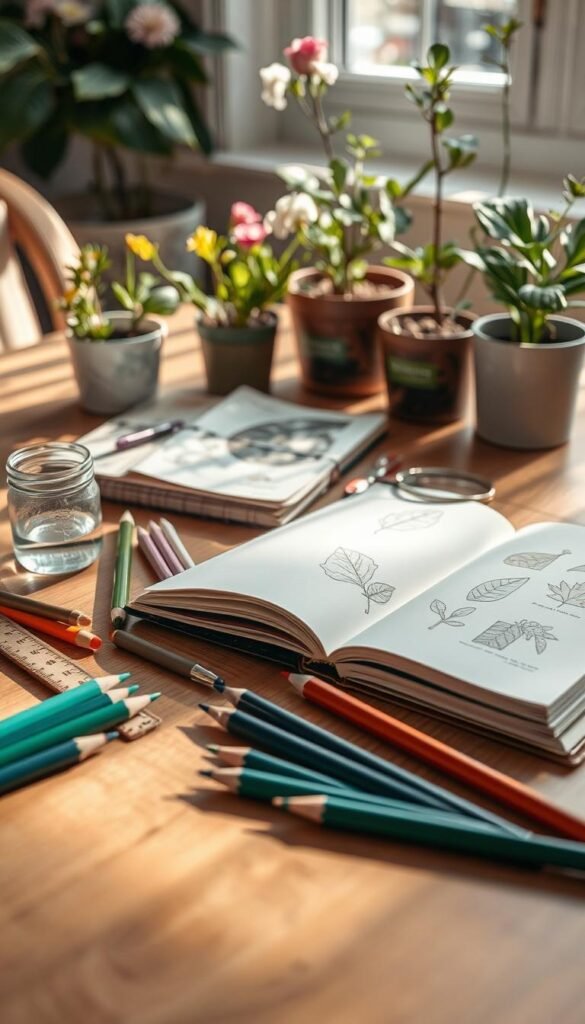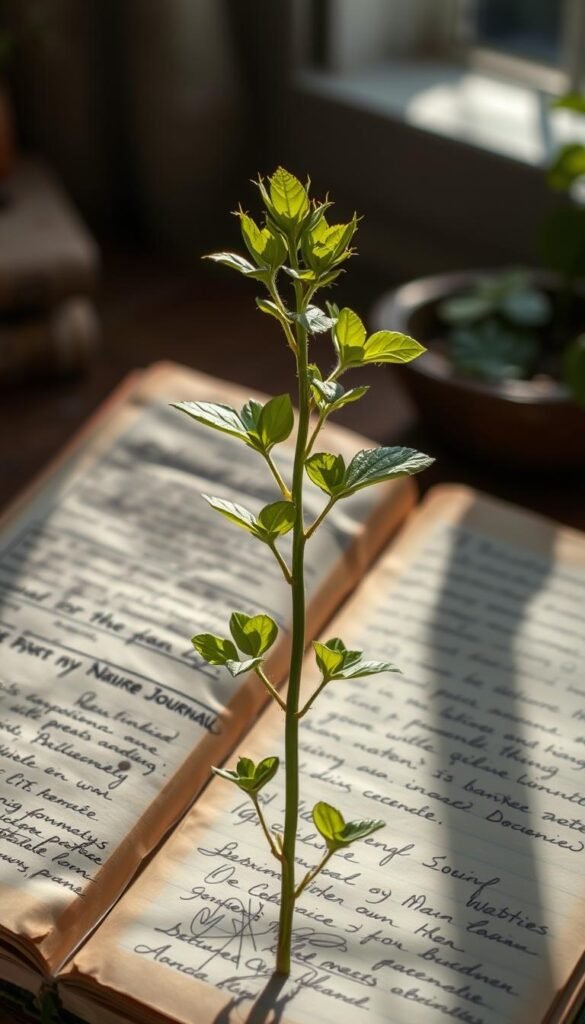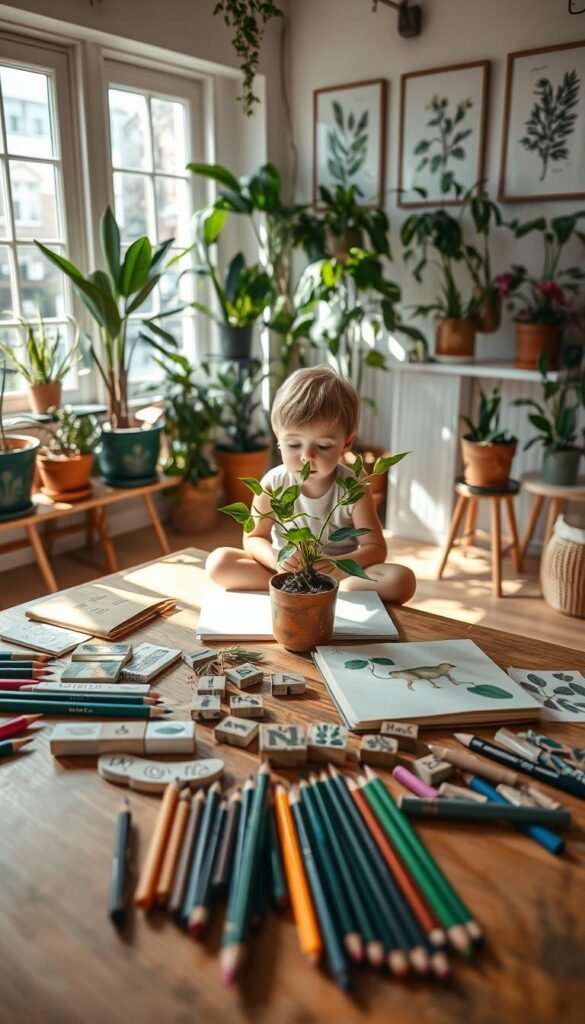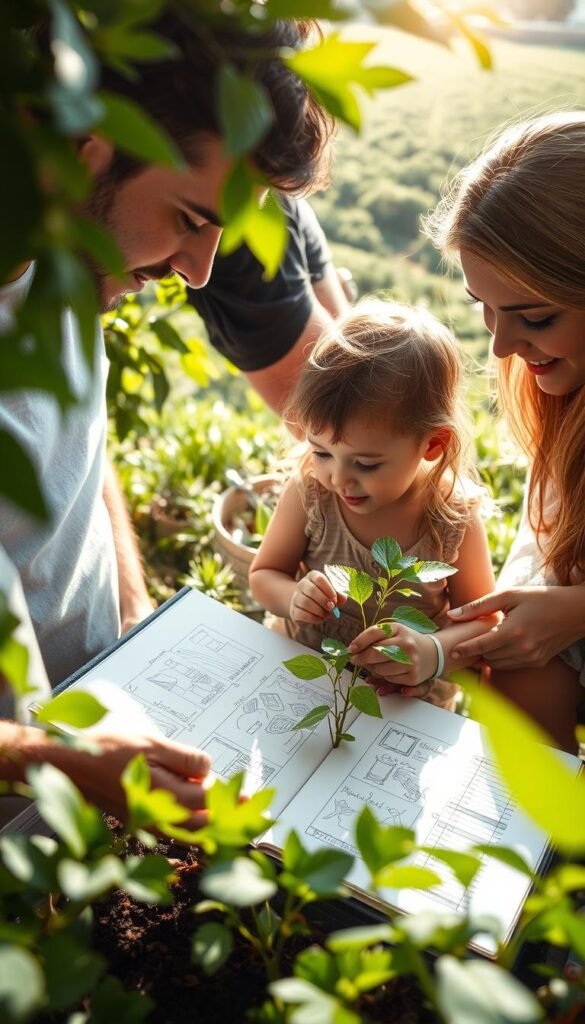Imagine transforming ordinary afternoons into treasure hunts where leaves become maps and flower buds hold secrets. Creative outdoor documentation offers families a unique way to bond while nurturing curiosity about the living world. This hands-on practice requires nothing more than a notebook, keen eyes, and willingness to explore together.
Young explorers thrive when given freedom to express their discoveries. Whether sketching sprouting seeds or pressing autumn foliage, every page becomes a personal masterpiece. There’s no wrong way to document growth patterns – messy crayon drawings hold as much value as detailed diagrams when made with genuine excitement.
Regular outdoor sessions create natural pauses in hectic routines. Children gradually sharpen their ability to notice subtle changes in their environment, from shifting leaf colors to emerging insect visitors. These moments away from screens often spark unexpected questions about ecosystems and seasonal transformations.
Families discover hidden benefits beyond simple record-keeping. Shared observations become conversation starters about environmental stewardship. Completed pages serve as time capsules, preserving memories of growth – both in plants and young minds. Many adults cherish these childhood creations, finding wisdom in their early attempts to understand nature’s rhythms.
Getting Started with Your Nature Journal

Building a custom explorer’s notebook sparks creativity and connection with the environment. All you need are common household items: cardboard for covers, blank sheets for pages, and a rubber band with a stick for binding. This hands-on project turns ordinary supplies into something magical – your family’s first field research tool.
Gather Essential Materials and Tools
Start by cutting cardboard and paper to preferred sizes. Younger adventurers might choose palm-sized pages, while older ones could opt for larger formats. A hole punch creates binding holes, with sticks adding rustic charm when securing pages. “The best journals reflect their creators,” says a seasoned homeschooling parent. Let artists personalize covers using markers, stickers, or pressed leaves.
Setting Up for Daily Discoveries
Organize pages for different observation types. Left-handed kids might prefer side-binding, while ringed binders allow paper swaps. Keep art supplies handy – colored pencils work better than crayons in damp weather. For inspiration, see our guide on tracking growth discoveries through seasonal changes.
Pocket-sized versions encourage impromptu sketching trips, while home-based binders store watercolor masterpieces. The key? Make it durable enough for mud stains and glitter explosions alike. When children design their own tools, they’re more likely to engage deeply with outdoor exploration.
Nature Journals: How to Record Plant Growth with Your Kids

Turn everyday explorations into scientific adventures by tracking green friends’ transformations. A simple notebook becomes a detective’s logbook where daily observations reveal nature’s hidden patterns. Young scientists learn best when they can touch, measure, and visually track progress.
Observing and Documenting Plant Changes
Clear plastic bags create instant laboratories for studying seed development. Tape bean or sunflower seeds to the inside, then watch roots emerge like living sculptures. “The plastic bag method lets children witness miracles they’d normally miss underground,” shares a science teacher. Track progress every 3 days using:
| Growth Stage | Key Features | Measurement Tips |
|---|---|---|
| Germination | Root length | Use ruler markings |
| First leaves | Leaf count | Color-coded diagrams |
| Maturation | Height changes | Wall growth charts |
Tips for Capturing Leaves, Flowers, and Growth Stages
Create layered entries combining sketches and physical samples. Place autumn foliage under paper and rub with crayons to capture vein patterns. Measure stem girth using yarn segments labeled with dates. For flowers, sketch bud phases from tight clusters to open blooms.
Track environmental impacts by noting weather conditions beside watering dates. Did basil grow faster during rainy weeks? How did tomato stems react to different sunlight hours? These comparisons turn simple notes into real scientific investigations.
Creative Ways to Engage Your Kids in Plant Journaling

Transform blank pages into vibrant storyboards where art meets science. Mixing hands-on techniques with imaginative play keeps young minds invested in tracking botanical changes. Watch as observation skills blossom alongside creativity when journals become multimedia playgrounds.
Incorporating Art, Photography, and Nature Rubbings
Turn fallen leaves into textured prints using crayon rubbings – press paper over surfaces and watch hidden patterns emerge. Let children arrange pressed petals like puzzle pieces, creating collages that map a flower’s life cycle. Compact cameras or smartphones help document growth through photos, revealing angles adults often miss.
Try watercolor washes as backgrounds for plant sketches. One parent shares: “My daughter discovered shading techniques while drawing sunflower stems.” For structured gardening inspiration, explore fine motor skill activities that complement journal projects.
Interactive Nature Scavenger Hunts and Storytelling
Create treasure hunts for specific leaf shapes or bud colors. Kids love checking items off lists while practicing identification skills. Turn findings into narratives – what adventures might a ladybug have on that zinnia?
Build personalized field guides by taping samples beside hand-written names. When unsure about a plant, make discovery a team activity: “Let’s photograph this flower and compare it to wildlife project guides when we get home.” Celebrate unique entries – a smudged fingerprint butterfly deserves as much praise as a perfect sketch.
Wrapping Up Your Plant Growth Journal Experience
Watching seedlings stretch toward sunlight mirrors your family’s growth through this activity. Those scribbled notes and smudged sketches? They’re more than pages – they’re passports to rediscovering wonder. Regular entries turn into a time capsule of laughter, dirt-stained fingers, and “aha!” moments under open skies.
Completed journals shine in unexpected ways. Many become prized possessions kids revisit for years, like one gardener who still smiles at her eight-year-old self’s carrot measurements. These books often impress judges at garden fairs or inspire classroom projects – your child’s sunflower charts might kickstart a school composting program!
Each entry plants seeds for lifelong earth stewardship. Comparing last summer’s tomato sketches with this year’s vines teaches pattern recognition. Those pressed flower petals? They’re first steps toward understanding ecosystems. You’re not just filling pages – you’re growing future scientists and caretakers.
Keep the momentum by starting fresh journals each season. Track how skills evolve alongside your basil or zinnias. Years from now, you’ll treasure these records of growth – both in your garden and your budding naturalists.






